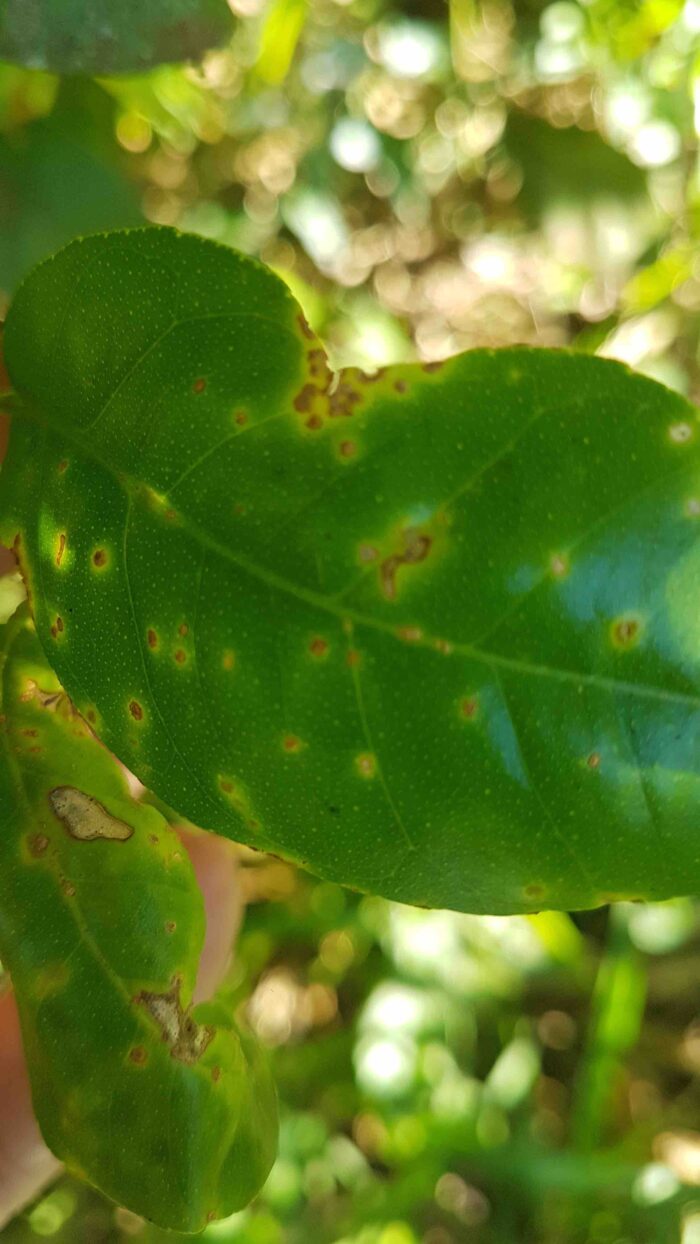Chancre des agrumes
Citrus
Citrus canker is caused by a bacteria that penetrates citrus trees through stomata or wounded tissue.The disease favors high humidity that is combined with warm weather conditions. Citrus canker can spread by winds, rain or water splashes, and it can be transmitted mechanically through using contaminated tools.
Initial symptoms of citrus canker are small lesions on leaves that might resemble blisters. Later on, the blisters develop into brownish necrotic-like elevated corky lesions often surrounded by a yellow halo. On twigs, citrus canker appears corky, which is often surrounded by water-soaked margins. On fruits, citrus canker appears as brown scab-like or corky lesions and appear as elevated tissue.
Generally speaking, once a tree is infected with the bacteria, the tree begins to slowly decline towards the death. The fruits and foliage tend to drop prematurely and infected fruits that have canker signs are not marketable. Citrus canker has the ability to decimate entire orchards and poses a huge risk to the whole citrus industry.
Assainissement: Gardez l’environnement proche des cultures en éliminant les mauvaises herbes, les débris de plantes, les parties endommagées, la croissance indésirable des plantes et les plantes à proximité qui ne sont ni cultivées ni protégées.
Le matériel et les travailleurs des régions infectées doivent subir un processus de désinfection afin d’empêcher la maladie de se propager.
Les barrières physiques peuvent aider à réduire la propagation du chancre, en particulier dans les situations d’endémie, car une part importante des nouvelles infections est causée par des pluies venteuses.
Il n’y a pas de contrôle chimique efficace. Pulvérisez fréquemment des produits à base de cuivre, qui peuvent aider à protéger les fruits et les feuilles et à supprimer la maladie.
Le contrôle de la mineuse est vital car les tunnels exposent les tissus des feuilles à l’infection.
*Names marked in red are considered to be highly poisonous to beneficial insects.
*Names marked in green are considered to be organic and IPM (integrated pest management) compatible.
Image Gallery


